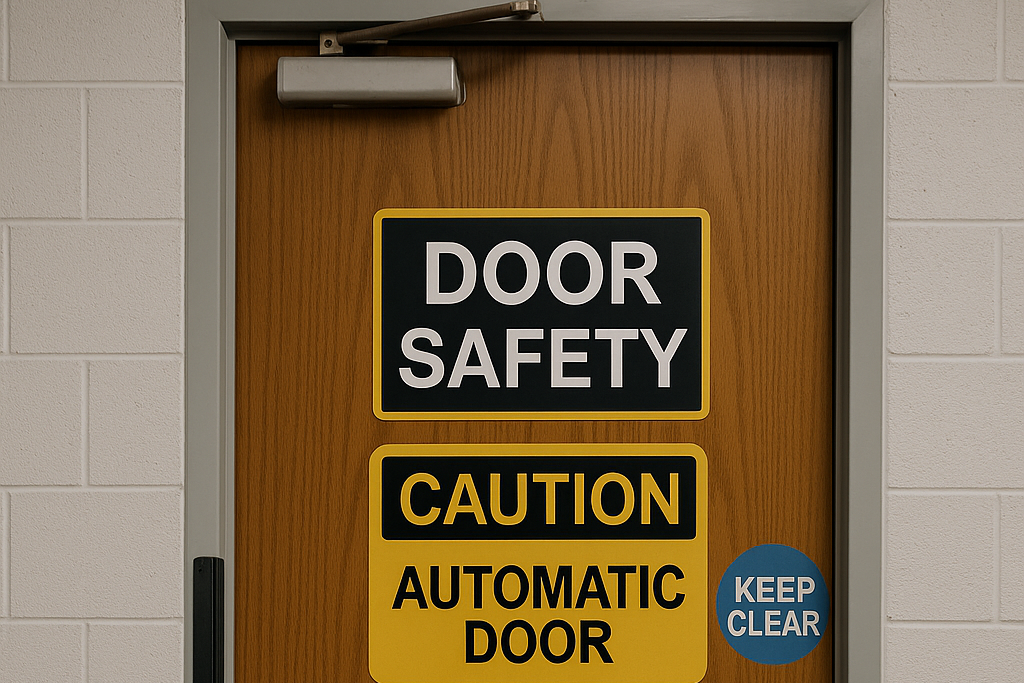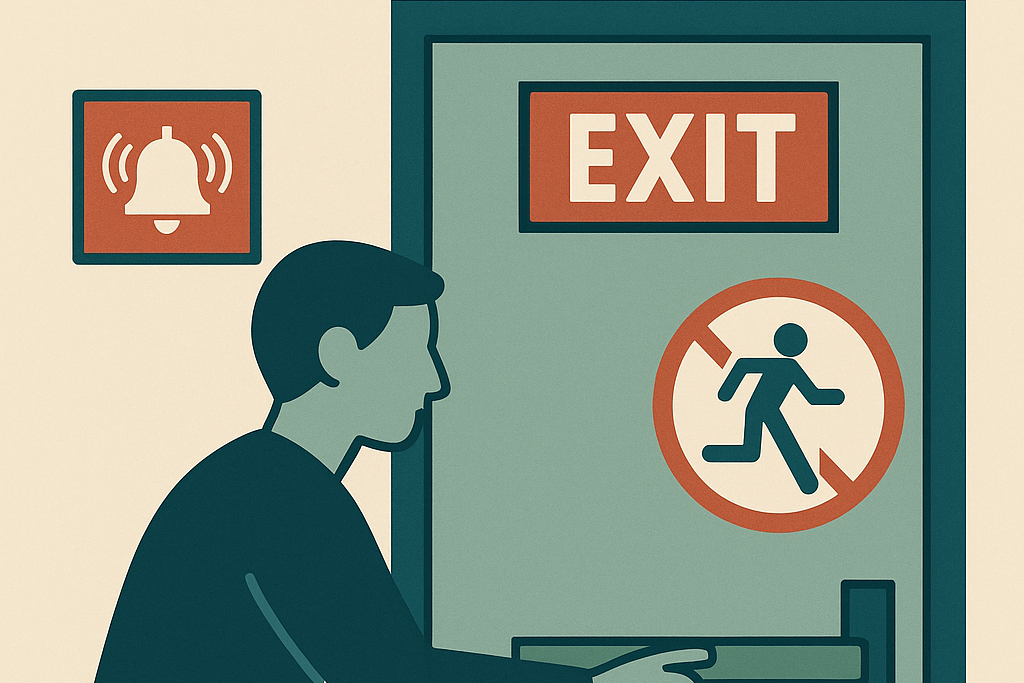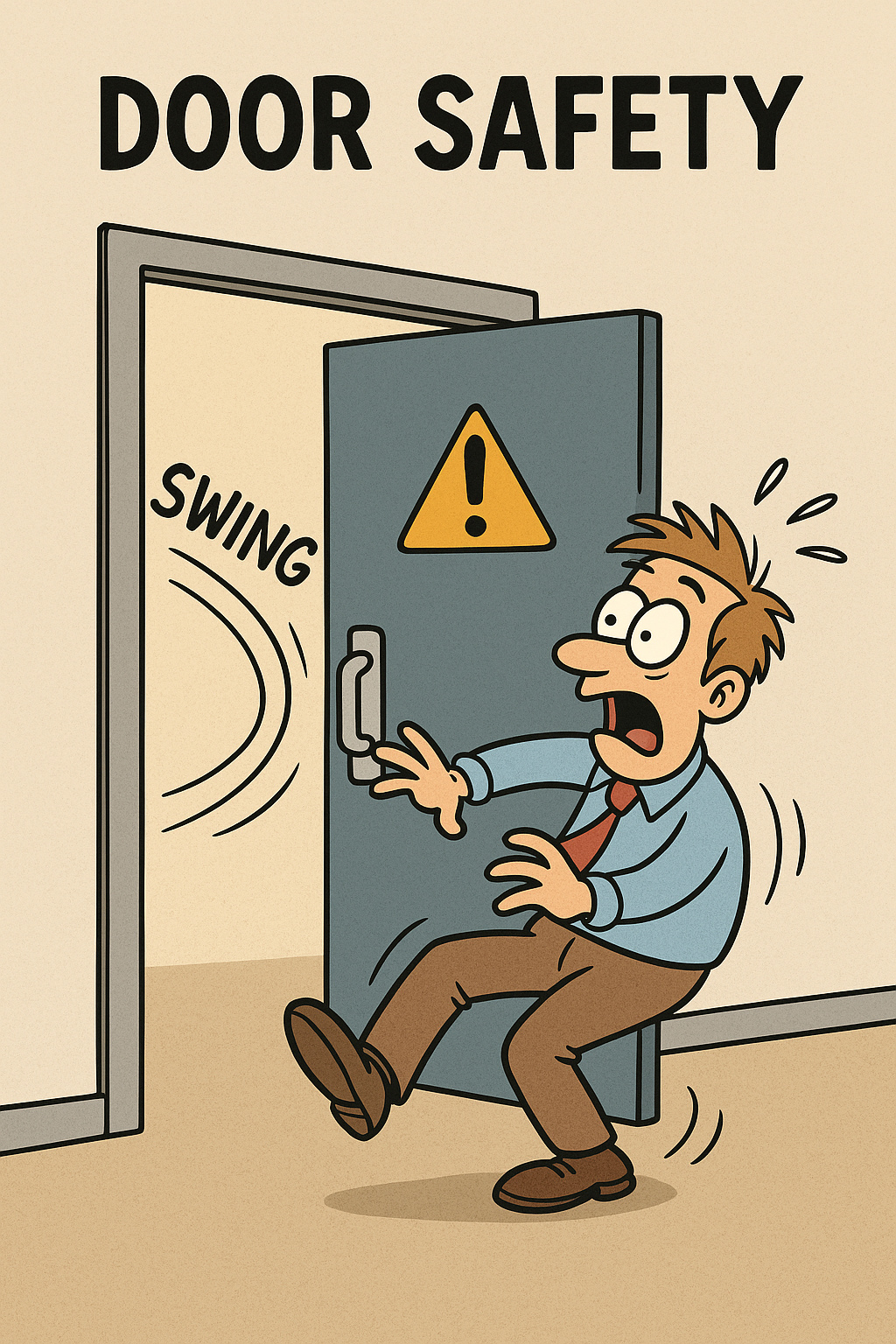Door safety is a critical but often overlooked aspect of occupational health and safety. From warehouse roller doors to fire exits and automatic glass entrances, doors of all kinds can pose serious injury risks when not properly maintained or used.
Employers and workers must prioritize door safety to prevent crush injuries, impact trauma, entrapment, and fire hazards.

Understanding the various risks and implementing safety controls not only ensures compliance with OHSE regulations but also protects lives and maintains productivity.
- Common Workplace Door Hazards
- OHSE Regulations and Standards on Door Safety
- Injury Statistics Linked to Unsafe Doors
- Key Door Safety Measures for Employers
- Enhancing Door Safety Through Design
- Special Considerations for High-Risk Industries
- Smart Technology and Door Safety
- Emergency Preparedness and Doors
- Real-World Example: Injury from Malfunctioning Fire Door
- Resources for Door Safety Best Practices
- Final Thoughts: Make Door Safety a Daily Practice
Common Workplace Door Hazards
Door-related injuries can range from minor bruises to severe crush injuries, amputations, or fatal incidents. Hazards vary based on door type and workplace layout:
- Manual Swing Doors: Can slam shut due to wind, faulty closers, or user negligence.
- Sliding Doors: May derail or jam, creating entrapment risks.
- Automatic Doors: Risk of malfunctioning sensors causing premature closing.
- Roller Shutters: Pose crush and impact risks during operation or failure.
- Fire Doors: Improper use can compromise emergency egress and containment.
Improper signage, poor visibility, obstructed paths, and lack of training further increase the likelihood of door-related incidents.
OHSE Regulations and Standards on Door Safety
Workplace door safety is addressed under several OHSE standards,
including:
- Canada Occupational Health and Safety Regulations (COHSR) – Mandates unobstructed exits, fire-rated doors, and injury prevention practices.
- ANSI/BHMA A156 Standards – Applicable to door hardware performance and automatic doors.
- CSA B651 – Ensures doors meet accessibility and safety needs.
- Fire Codes – Fire doors must not be wedged open and must self-close securely.
Failing to meet these standards can result in fines, liability, or worker injuries.

Injury Statistics Linked to Unsafe Doors
According to WorkSafeBC and other provincial regulators:
- Thousands of door-related injuries are reported annually across industries.
- Common injuries include pinched fingers, shoulder dislocations, and head trauma.
- Many injuries occur in healthcare, retail, warehousing, and schools.
These figures highlight the importance of including door safety in workplace hazard assessments.
Key Door Safety Measures for Employers
To ensure door safety in any workplace, employers should take the following preventive steps:
Conduct Door Safety Risk Assessments
Identify all doors, their functions, user frequency, and potential risks. Include doors in dynamic environments such as loading docks or laboratories in this assessment. Reassess after layout changes or incident reports.
Install Proper Signage and Markings
Use “Caution: Automatic Door,” “Keep Clear,” or “No Entry” signs with high-visibility markings. Apply floor decals near high-traffic doorways. In Canada, bilingual or multilingual signage may be required.
Maintain All Door Systems Regularly
Implement scheduled inspection and maintenance of:
- Hinges, tracks, and closers
- Locking and safety mechanisms
- Motion sensors on automatic doors
- Emergency exit doors for functionality
Document maintenance logs as part of your OHSE compliance system.
Provide Employee Training
Train staff to:
- Use doors safely (e.g., not forcing them open)
- Report malfunctions immediately
- Avoid wedging fire doors
- Recognize malfunctioning auto-door sensors
Use toolbox talks to reinforce this training periodically.
Enhancing Door Safety Through Design
Safety should be considered during initial workplace design or renovations:
- Install vision panels in doors to prevent accidental collisions.
- Use slow-close mechanisms or damping systems to prevent slams.
- Ensure emergency exits are free of obstructions and properly lit.
- Widen doorways to improve accessibility and reduce pinch risk.
In food service and hospitals, double-swing doors with window panels improve visibility and prevent accidents in fast-paced environments.
Special Considerations for High-Risk Industries
Warehouses and Logistics Facilities
- Use high-impact protection bollards near large roller doors.
- Install warning beacons and audible signals during operation.
- Maintain clear floor markings around door zones.
Healthcare Facilities
- Ensure automatic door sensors accommodate wheelchairs and stretchers.
- Install anti-pinch mechanisms to protect fingers and limbs.
- Equip doors with emergency override and fail-safe functions.
Schools and Childcare Centres
- Fit finger guards or anti-pinch strips on all accessible doors.
- Monitor doors closely in play areas or during peak activity periods.
- Teach children basic door safety awareness as part of health education.
Smart Technology and Door Safety
The rise of smart buildings has introduced automated access control and safety features such as:
- Infrared sensors for accurate door actuation
- Occupancy counters that prevent overcrowding near doors
- Remote monitoring to detect faults or misuse
Employers can integrate these with workplace management systems to improve real-time safety performance.
Emergency Preparedness and Doors
In emergencies like fires or active threats:
- Exit doors must be accessible and never locked from the inside.
- Emergency lighting and photoluminescent markers must guide evacuation.
- Regular drills should test the functionality of exit doors and worker response.
Including doors in emergency response plans is a legal and moral obligation.

Real-World Example: Injury from Malfunctioning Fire Door
In 2023, a Toronto-based office experienced an incident where a fire door slammed shut due to a faulty closer, crushing a worker’s hand. Investigation revealed overdue maintenance and no safety signage. As a result:
- The company was fined under provincial OHSA rules.
- The injured worker required surgery and time off work.
- The company implemented stricter door maintenance protocols.
This case illustrates the high cost of neglecting door safety.
Resources for Door Safety Best Practices
For more information and compliance tools, refer to:
- CCOHS – Canadian Centre for Occupational Health and Safety (DoFollow)
- OHSE.ca for industry-specific safety articles
- UL Solutions for product safety certifications (DoFollow)
- CSA Group for Canadian standards
- Safe Work Australia for global benchmarks
Final Thoughts: Make Door Safety a Daily Practice
Door safety is not just a facility maintenance issue—it’s a fundamental part of creating a safe, accessible, and legally compliant workplace.
From routine inspections to emergency planning and staff awareness, every measure counts. Employers and OHSE professionals must prioritize doors in their risk assessments and daily routines.
Injury prevention begins at the threshold—literally.


No comments yet